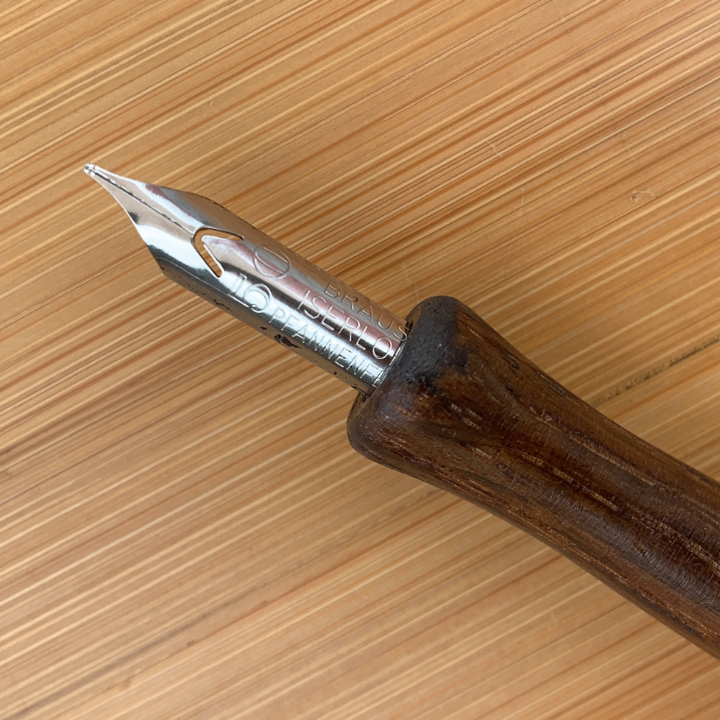Nibs: Brause 50, Kakimori Stainless Steel Nib, and two vintage nibs
I recently discovered a new store that sells nibs: St. Loius Art Supply. What first drew me in was that the store purchases old nibs and makes them available for sale. You can check out their stock here. It’s an incredible list and I haven’t seen many of these nibs before.
So of course, I got a few.

Gilbert & Blanzy-Poure #29 Lance Nib
This one stood out to me due to its sleek lines. It is a very springy nib, but doesn’t result in a lot of line modulation. It’s nice and easy to use. And just beautiful to look at.

Eva Extra #318
This is a larger nib that feels a like like a G nib, but I found it a lot more responsive than the G nibs I’ve used. Like the Lance nib, the Eva Extra #318 doesn’t offer a lot of line modulation, but it feels nice and smooth to draw with.
But I also got some other nibs to try out, ones that are still being manufactured.

Brause #50 Pfannen Nib
I thought I had tried all the Brause nibs. I guess not. As with all Brause nibs, the 50 is nicely made. It has a slightly rounded point which makes it good for lettering. As such, this has become my new go-to lettering nib. I like it better than the Cito Fein.

Kakimori Stainless Steel Nib
Then I splurged and got this nib. As the St. Louis Art Supply site says, it isn’t often that you see something completely new in the world of pen nibs. This nib doesn’t behave the way other nibs do; pressure doesn’t cause the point to flare out. Instead, the grooves you see help the nib to hold a large amount of ink. The capacity is much larger than any other nib I’ve used. The tip comes to a point that offers a consistent line width. However, if you turn the nib on its side, you can get huge swells. So it works a little like a folded pen nib.
Because the feel of the drawing is so different, it took me awhile to get used to this nib. I’m just so used to using pressure to create line swells that I was a little perplexed at first. What I found is that you can create different widths of lines by turning the nib, but I couldn’t get it to modulate in a single stroke. So I could draw in a small line width or I could lay the pen on its side and draw in a very broad line width. But I had to alternate instead of change within a single stroke. Still, it’s like having two different nibs in a single nib.



